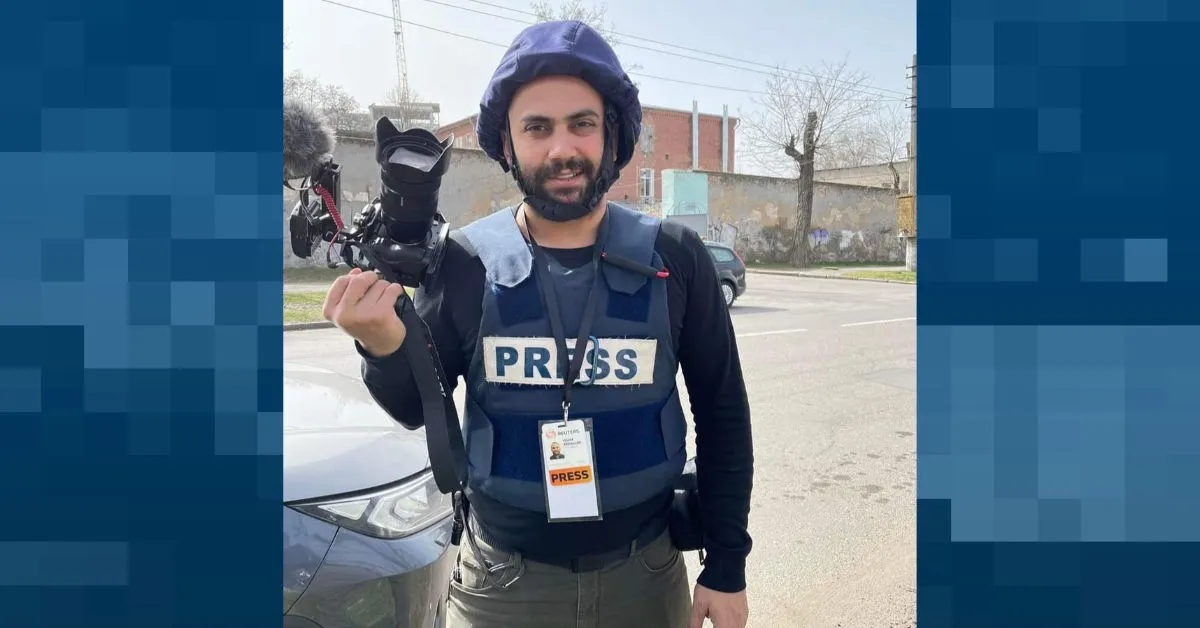
Israeli forces fighting near the country’s border with Lebanon deliberately targeted a group of journalists who were covering events there, leading to the death of a Reuters photojournalist and leaving six others seriously injured, according to the findings of a press freedom group.
Over the weekend, Reporters Without Borders (Reporters Sans Frontieres/RSF) released a video reconstruction of what it says happened along the Israel-Lebanon border on October 13, when journalist Issam Abdallah was killed after a mortar fired by Israeli forces landed near a home where he and other reporters were positioned.
At the time of the strike, Abdallah and other journalists were wearing protective gear that clearly identified them as members of the media, and vehicles they were using had conspicuous “PRESS” markings on it, RSF said.
???? RSF releases the findings of its investigation into the death of @Reuters reporter Issam Abdallah in Lebanon, on the border with Israel: even though Abdallah and his colleagues were clearly identifiable as journalists, their vehicle was deliberately targeted. ???? pic.twitter.com/Y8KeAqk8bg
— RSF (@RSF_inter) October 29, 2023
Shortly after the strike, a number of eyewitnesses said the mortar was fired by Israeli forces. A spokesperson for the Israeli Defense Forces (IDF) said the military was “sorry” to learn of any press casualties and affirmed the group was “looking into it,” RSF said.
What was not immediately clear is that two separate strikes actually fell near the press convoy, according to RSF’s findings. The first strike was the one that killed Abdallah, according to RSF, while a second, much-larger mortar struck a vehicle used by Al Jazeera and Agence France-Presse (AFP) journalists.
“Two strikes in the same place in such a short space of time — just over 30 seconds — from the same direction, clearly indicate precise targeting,” an RSF spokesperson said in a statement.
The spokesperson affirmed it was “unlikely that the journalists were mistaken for combatants” because they weren’t attempting to hide — instead, they were out in the open, clearly visible to anyone nearby, including military forces.
“In order to have a clear field of vision, they had been in the open for more than an hour, on the top of a hill,” the RSF spokesperson said. “They were wearing helmets and bullet-proof waistcoats marked PRESS. Their car was also identified as PRESS thanks to a marking on the roof, according to witnesses.”
The RSF investigation revealed an Al Jazeera journalist had spotted an Israeli helicopter flying over the area where the reporters were stationed shortly before the blasts, and concluded that “the reporters were therefore identified in the area by the forces present before the bombing.” Another journalist working for a Lebanese broadcaster reported seeing a similar helicopter just moments before the blasts that killed Abdallah and wounded his colleagues.
The strikes come amid tension between Israeli forces and Al Jazeera, the Qatar-based news organization whose news crew consisting of a reporter and photographer were among those injured in the two October 13 blasts.
Last week, financial news outlet Axios said American defense officials had requested Qatari officials to crack down on inflammatory rhetoric and reporting on the ongoing war between Israel and Gaza, which was started when Hamas militants from Gaza crossed over a controversial border between the two territories and carried out a series of terror attacks that left hundreds of Israelis dead.
Coverage on Al Jazeera’s Arabic and English-language news channels has skewed more toward covering the ongoing crisis in Gaza in the weeks since the attacks, with reporters focused primarily on the plight of Palestinian refugees who have been swept up in the conflict between Israeli government forces and Hamas.
During a meeting earlier this month, U.S. Secretary of State Antony Blinken reportedly asked Qatari Prime Minister Mohammed bin Abdulrahman bin Jassim Al Thani to have Al Jazeera “tone down” its coverage of the conflict.
Any such order would be unprecedented: While Al Jazeera is owned by the state of Qatar, it has long asserted its editorial independence from government officials.